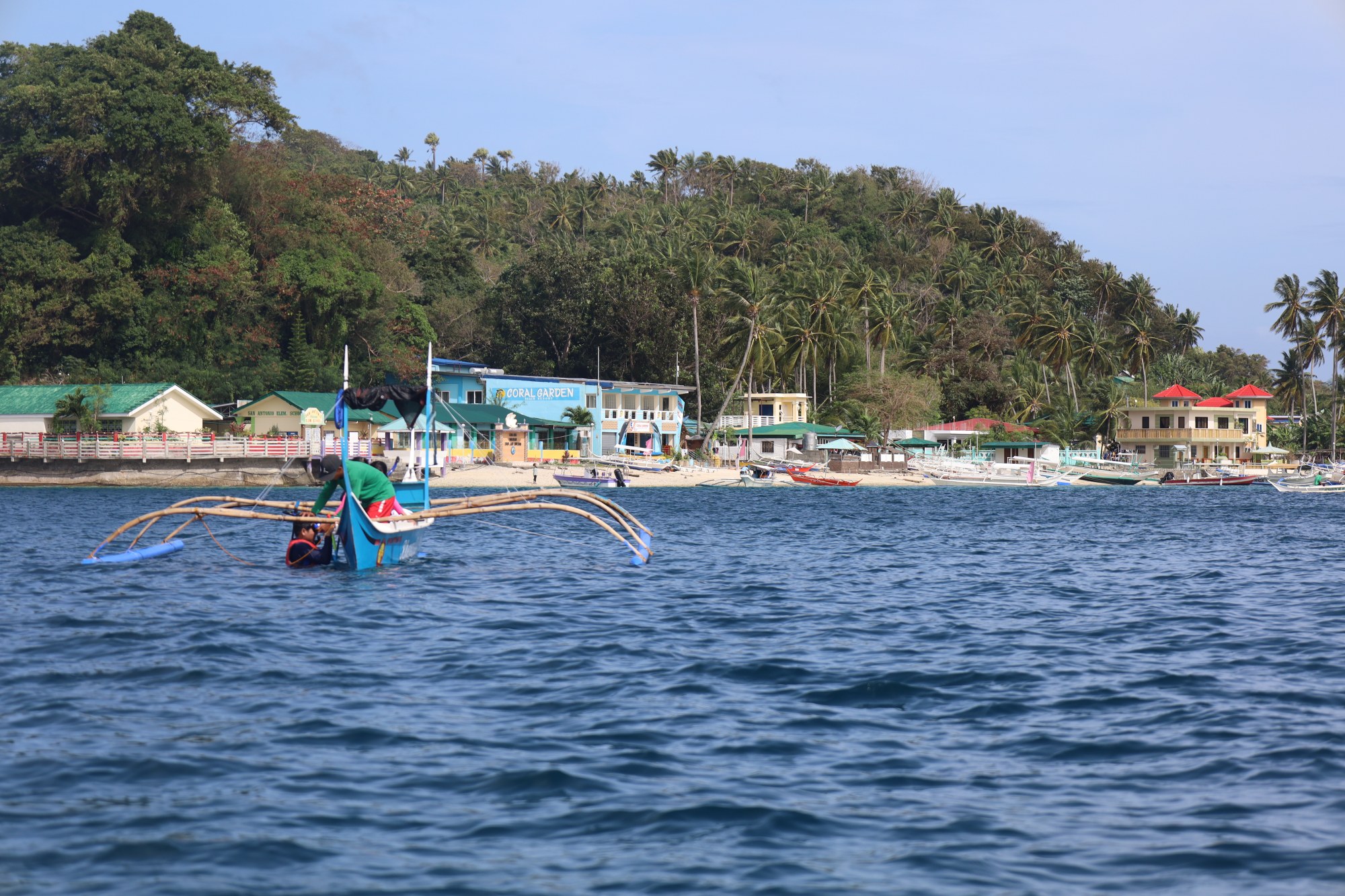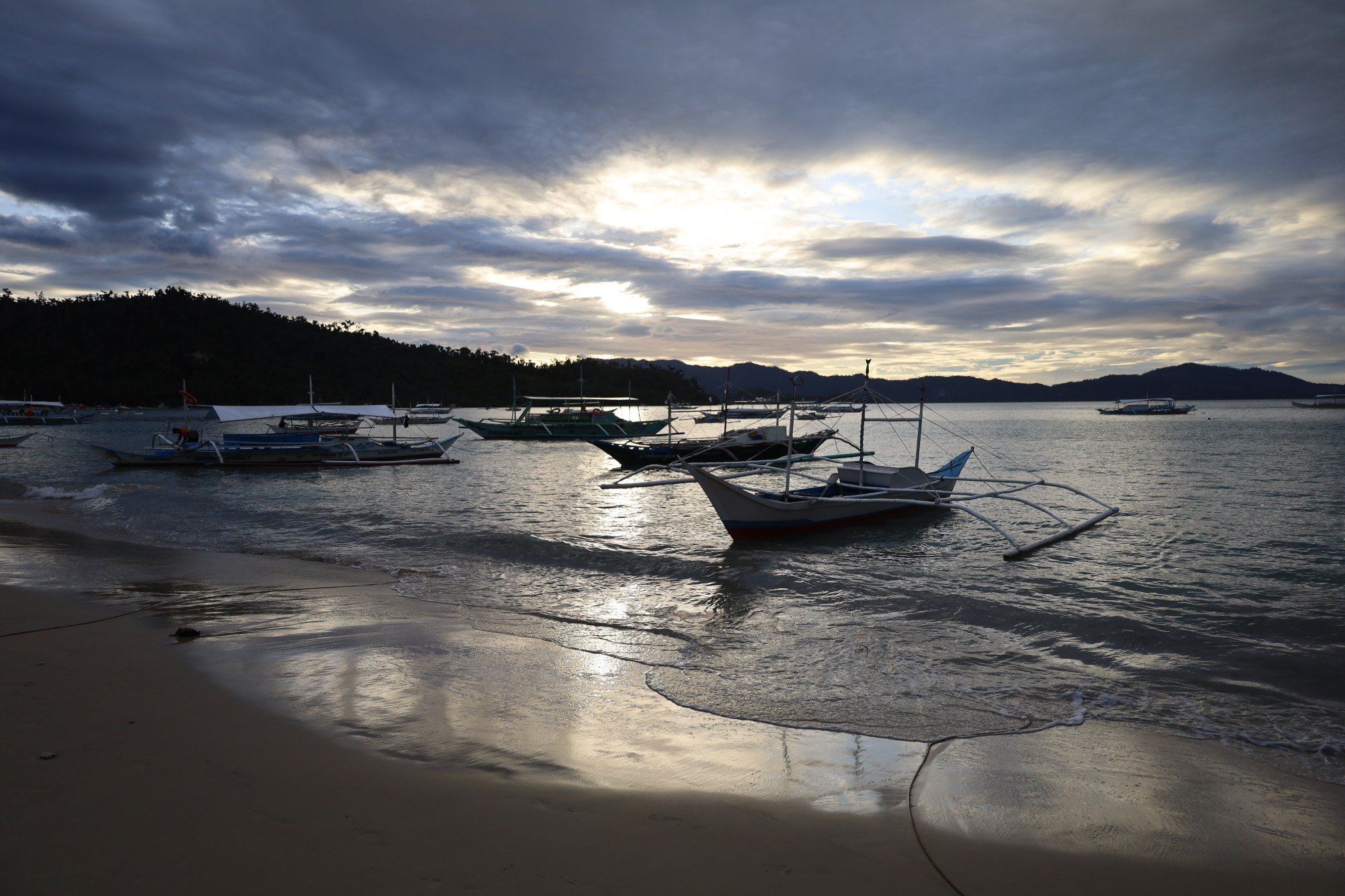
- Jeep, bus, minivans, ferries – we island-hop our way to the pearly white beaches, karst cliffs, coral reefs and rainforests of Palawan for a spot of snorkelling
On a map of the Philippines, Palawan resembles a keris, a short Malay sword.
Ecologists call the Sulu Sea castaway the “last frontier” due to its unique flora and fauna – wildlife that has more in common with that in nearby Borneo than the rest of the Philippine archipelago.
That – along with its unique geology, coral reefs and pearly white beaches – is why glossy magazines rank the island province as being among Asia’s best.

At the chaotic Buendia Bus Terminal, I board a coach for Batangas, 100km (60 miles) to the south.
At Batangas Pier, I push past street hustlers to purchase a ticket for the last of the day’s fast ferries across the Verde Island Passage, to Oriental Mindoro.
I celebrate getting to the other side with a cool San Miguel in the company of Commodore Terry Duckham, of the Puerto Galera Yacht Club.
“This might be the only yacht club in the world to be surrounded entirely by mangroves,” Duckham says, leading me through the club grounds, past nesting fruit bats and onto a waterfront walkway, to enjoy a full view of Puerto Galera’s marina.
It’s clear to see why the sheltered cove keeps Puerto Galera on the itineraries of many sailors, 450 years after the Spanish recognised its splendour and named it the “port of the galleons”.
Puerto Galera is on the north shore of Mindoro, an island that also sources its name from colonial Spain; mina de oro, meaning “gold mine”. Although not much gold was ever unearthed, offshore “gold” exists in the form of extensive coral reefs.
More than 40 world-class dive sites form part of a protected biosphere reserve that can be accessed through the dive resorts that dot the coastline, generating an alternative revenue stream to the fruit farming and fishing that anchor the island’s economy.


I spend days diving amid coral gardens and nights touring the watering holes that earn Puerto Galera its hedonistic reputation.
After a few days, a friend joins me and we begin motoring south, first to Oriental Mindoro’s capital, Calapan, by minivan, then on a Roro Bus to the capital of Occidental Mindoro, San Jose, at the far end of the 200km-long island of Mindoro.
Roro is an abbreviation of “roll-on, roll-off” and alludes to the network of vehicular ferries and roads called the “nautical highway” that wires the islands of the Philippines together.
The way to San Jose is a long one, however, as the road has been laid along the path of least resistance, around the jungle-coated mountains of Mindoro’s interior and following the coastal plains of the perimeter.
Occasionally, we stop in towns composed largely of coconut stalls, tiny churches and woody homesteads – Roxas, Bongabong, Magsaysay – to stretch our legs.

But it’s mostly hard driving aboard a cramped coach, every inch of space occupied by passengers and their luggage.
Along the rugged southern coast, we hit wild weather. The sight of trucks abandoned by the roadside only adds to our unease, and it is with some relief that we alight at San Jose Bus Terminal just after nightfall.
A Sunday market is under way along Rizal Avenue and the street snacks and friendly locals feel like ample compensation for an arduous day on the road.
Daylight reveals San Jose to be a tumbledown town of limited charm and few distractions, a provincial capital composed largely of shacks and serenaded by dog barks and motor-tricycle horn honks. It has the air of many a port, where crowds come and go like the tide.
Many people, like us, are killing time waiting for the biweekly ferry to Coron, which is scheduled to set sail the following morning, at 9am.

Except it doesn’t set sail until it is full, packed with every kind of cargo imaginable: boxes of mandarin oranges; sacks of red onions; crates of kitchen utensils; backpacks; and motor scooters.
All passengers are directed to the upper deck, which is lined with numbered bunks.
With little fanfare, we set off at 11am, the spray and ocean breeze blowing between the roof and the deck floor evoking the glory days of galleons, before sealed cabins tamed the seagoing experience.
The day is warm and the water calm, which makes for a smooth, three-hour crossing.
It is only when we make our way through the towering karst rock islets that flank the Coron Passage that we get a sense of why Palawan is so popular in the age of image-driven social media.

Coron is the northernmost municipality of the archipelagic province, a remote fishing settlement turned bustling diver’s ghetto, due largely to the many World War II Japanese shipwrecks found in its waters.
Coron Town’s jumbled streets are packed with restaurants, bars and pension houses (traditional hotels).
This is also the jumping off point for those wishing to explore the geographical peculiarities of Philippine karst country; almost all of the most scenic sites are offshore and accessed by motorised bangka (an outrigger common to maritime Southeast Asia).
A “budget island-hopping tour” is easily arranged with Experience Coron Travel & Tours and we spend a blissful day swimming in the turquoise waters of the Twin Lagoon, snorkelling the life-rich Malwawey Reef and lunching in a thatched hut on White Sand Beach, which is backed by a giant karst cliff face and accessible only by boat.
To get to Palawan proper, the island that gives its name to the province, we need to catch one more ferry, not a Roro but a Japanese-made fast boat that gets to El Nido with air-conditioned efficiency in a little over two hours.


Our arrival in Coron may have been spectacular, but El Nido harbour elicits gasps from all on board, the ferry docking alongside a wharf fenced in by a jagged wall of karst peaks.
Sitting poolside, Rommel Bautista, a Manileño whose wife, Rose Ann, co-owns Perch, reels off some of the names of the islands that make the Bacuit archipelago such a visual spectacle.
Suddenly, and quite bizarrely, two backpackers in Superman pose whizz by on the Palawan Zipline, which spans the bay.


Hankering for somewhere a little more “untouched” – and having said farewell to my friend – I seek advice from Elliot Luckly, a Briton who once worked as the manager of The Jockey pub, in Hong Kong’s Happy Valley, before relocating to Palawan with his Filipino wife, Vivian.
He suggests Port Barton, a village to the south, halfway between El Nido and the provincial capital, Puerto Princesa, that was connected by road only recently.
A five-hour minibus ride, an hour of which is spent veering towards the northwest coast along a jungle-fringed mountain road, delivers me to a tiny settlement encompassed by hills coated in virgin rainforest.
Its roads are unpaved and stalked by chickens and feral dogs.
At my guest house, I’m informed that the electricity does not come on until 6pm. Without a fan to cool off under, I head to the crescent-shaped bay, a strip of sugary sand lined by a few discreet resorts and fishermen’s sheds.


Children play in the waves and bob in the shallows while boatmen sit on the sand, chatting.
I dive in.
Port Barton faces west, and the cascading sun dyes the water blood-orange as it melds with the horizon, bringing the curtain down on another day in paradise.

